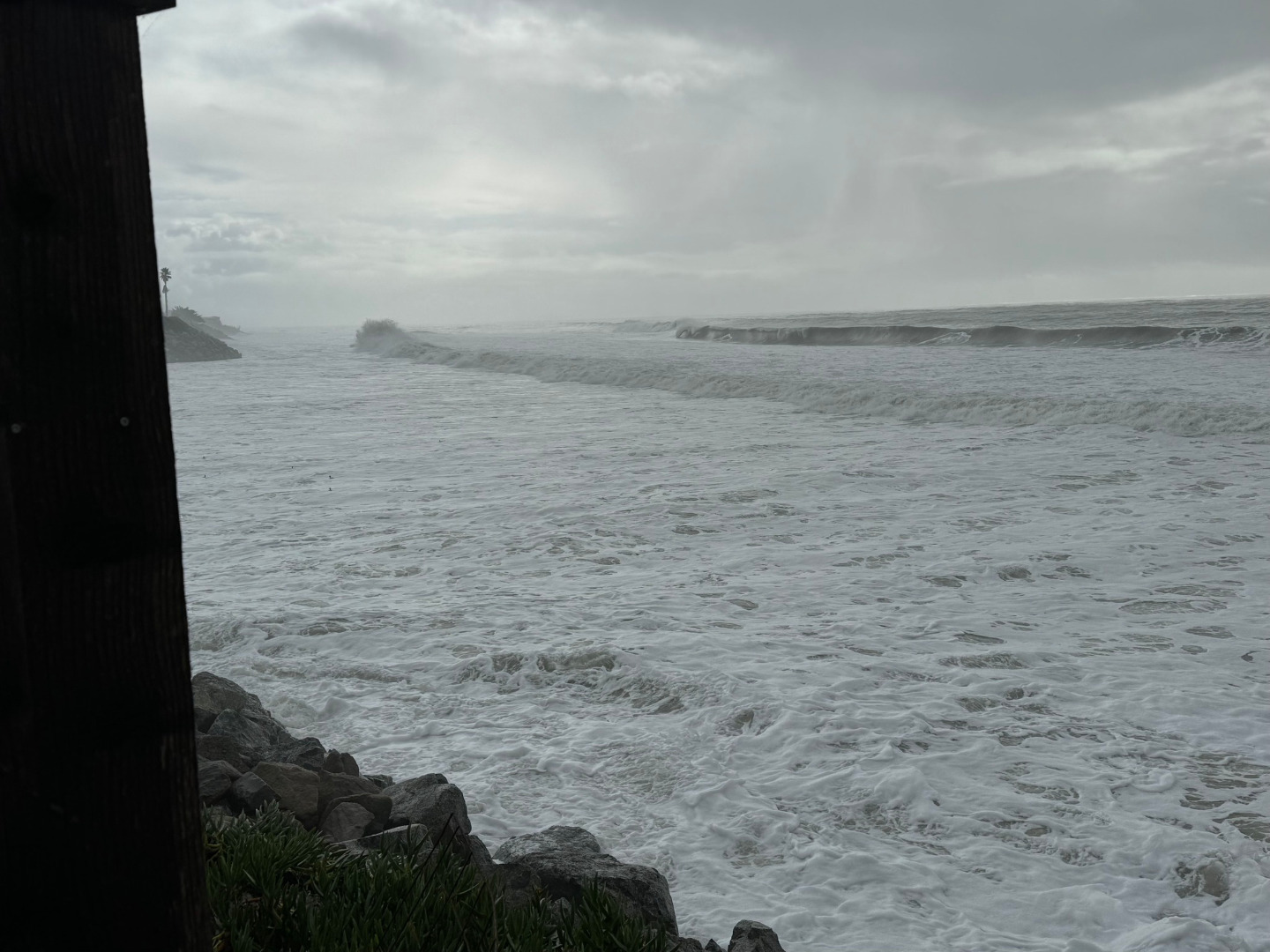Fish Report for 1-5-2024
Gigantic swells poured through the California coastline this week

by Allen Bushnell
1-5-2024
Website
Gigantic swells poured through the California coastline this week. Waves came from the West along our Central Coast. That makes exposed beaches all the more vulnerable, especially when the waves are combined with king high tides as they were last week. The only watercraft coming and going from the Santa Cruz Harbor were Jet skis manned by tow-in surfers or rescue crews. The waves were huge, with outer bay weather buoys measuring swells exceeding 40 feet at 23 seconds. We received no reports from the deepwater rockfishers and Dungeness crabbers. Those boats remained tied to the dock. The Santa Cruz area got hit especially hard with extensive damage reported from the West Cliff area, Capitola Village and the cliffside flats near Rio Del Mar. On a positive note, this swell is providing the bonus of actively creating “structure” that anglers look for while hunting the wily surfperch, a wintertime fishing favorite.
Big waves and the consequent strong sideshore currents have the effect of repositioning the concentration of sand that deposits on our beaches over the summer months. The sand is dredged from some areas and built up in other areas, creating channels and deep-water “holes” along the surfline. These are the areas where we find feeding perch. The deeper water and currents transport sandcrabs, worms and other prey items for the perch to feast on. Any sandy beach along the Monterey Bay can provide fantastic surfperch fishing. It is mostly a matter of becoming familiar with the beach conditions that feeding perch prefer. Those conditions are constantly changing. Big storms with huge waves create changes more obvious and dramatic. After week-long weather and waves like we’ve just experienced, it pays to scout your favorite fishing beaches to see what the storm hath wrought.
Surf fishing after the storms can be frustrating. Residual swells can make it difficult to find fish. We usually look for deeper water spots within casting distance of the beach. Surf perch and striped bass seem to prefer active surf for their feeding. The waves and currents dredge up food items for the fish. But, those waves are often relentless, and it looks like nothing but whitewater out to the furthest sandbar. With experience, surfcasters begin to recognize some subtleties in what appears to be wall to wall whitewash.
Try this: Track a swell coming in from the open sea and closely observe that one wave as it progresses towards shore. The hump of green swell grows vertically as the underwater portion of the wave energy begins to “drag” on the increasingly shallow ocean floor. Finally, the top of the wave reaches a critical point when the water shallows sufficiently, causing the top of the wave to fall. That wave is now “breaking” and looks like foaming whitewater in its rush towards the beach. Keep a close eye on that whitewater and you might begin to see it “back off.” The foamy portion gets smaller at the top of the wave and more green swell at the bottom of the wave appears. This means the wave is traveling over a deeper spot, reducing the drag on the underside of the wave. Those deep spots can indicate a trough that runs parallel to the beach. There may be two or three troughs between the outer sandbar and dry sand. These troughs are classic feeding areas. Get your bait to these troughs and let the current sweep your bait along, while keeping the slack out of your line. Don’t be surprised if you get multiple hookups utilizing this technique.
More Reports
Dungeness crab action to pick up Jan. 5

12-29-2023
The California Department of Fish and Wildlife announced commercial Dungeness crab restrictions will be lifted on January 5, 2024 in...... Read More
Expert offers tips for successful surf fishing

12-23-2023
Surf perch season is well upon us now. Once conditions clear up from these latest and much appreciated rainstorms, we’ll...... Read More

Website Hosting and Design provided by TECK.net